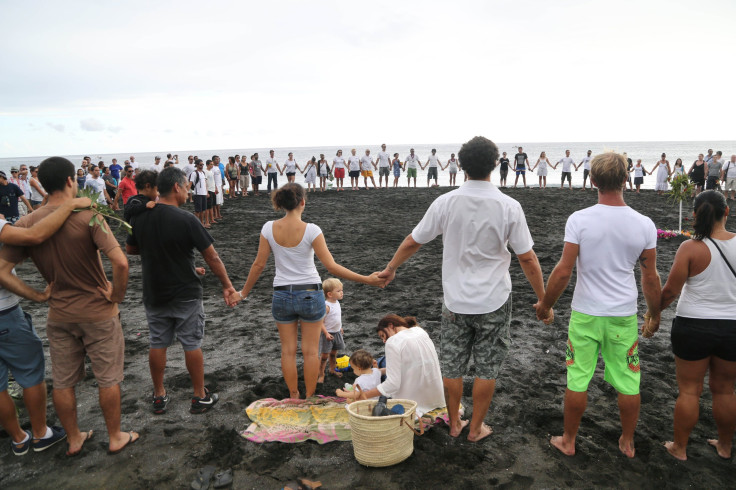Human Chain Beach Rescue: Beachgoers Join Hands To Save Swimmers In Trouble

Beachgoers in Emerald Isle, North Carolina, formed a human chain to rescue swimmers caught up in rough and dangerous ocean currents on Wednesday.
A video of their valiant efforts was uploaded on social media by an onlooker named Shane Gentry. The clip showed the crowd at the beach rushing to join hands in an attempt to save two swimmers who appeared as distant specks in the video.
"It was nuts. I've never seen anything like it," Gentry told CBS 17.
The Town of Emerald Isle confirmed via Twitter a man drowned at the beach Wednesday, issuing a warning for everyone to avoid going into the waters until further notice.
“Confirmed drowning in Emerald Isle this afternoon. Dangerous surf conditions continue in Emerald Isle, RED FLAGS remain in place, and public should stay out of the ocean until further notice. Please don’t put yourself, others, and our emergency responders at risk unnecessarily,” the tweet said.
It is not clear if the swimmers the human chain was trying to rescue risked going into the waters after the warning flags were put up.
The identity of the man who drowned at the beach was not revealed by authorities even though local reports put the deceased’s age at 41 years. The man was reportedly rescued from the waters at 2:30 p.m. local time (EDT) and even though emergency responders tried to revive him, it was too late.
Morehead City emergency responders confirmed there were multiple swimmers rescued between Emerald Isle and Atlantic Beach on Wednesday due to strong oceanic currents, ABC11 reported.
The man’s death brought the total number of deaths due to rip currents in North Carolina this year to a total of 12, News Observer reported. North Carolina has had at least 55 recorded rip current deaths since 1996.
According to the U.S. Lifesaving Association about 100 people die in rip currents each year in the United States.
Deaths from rip currents are so common in fact that the National Oceanic and Atmospheric Administration and the American Red Cross has laid out the following tips to follow if one happens to get caught up in the middle of strong oceanic waves.
First and foremost, one is advised to stay calm and not panic in that situation, as it will only make things worse. Keeping a cool mind and conserving energy helps one think and figure out the next plan of action.
An everyday life analogy that can be equated with a rip current is that of an automated treadmill that malfunctions and hence cannot be turned off. The first step is to swim out of the current in a direction following the shoreline. When you feel you have safely made it out of the rip current, the next step is to swim at an angle to try and reach the shore.
In case you are hurt or find it impossible to swim out of the rip current, just let your body float on the surface of the water. Once out of the current, begin making your way toward the shore.
Lastly, in case you have reached near the shore where others can see you, but, are unable to reach the beach, wave your arms, yell to grab their attention and wait for help.
© Copyright IBTimes 2025. All rights reserved.






















